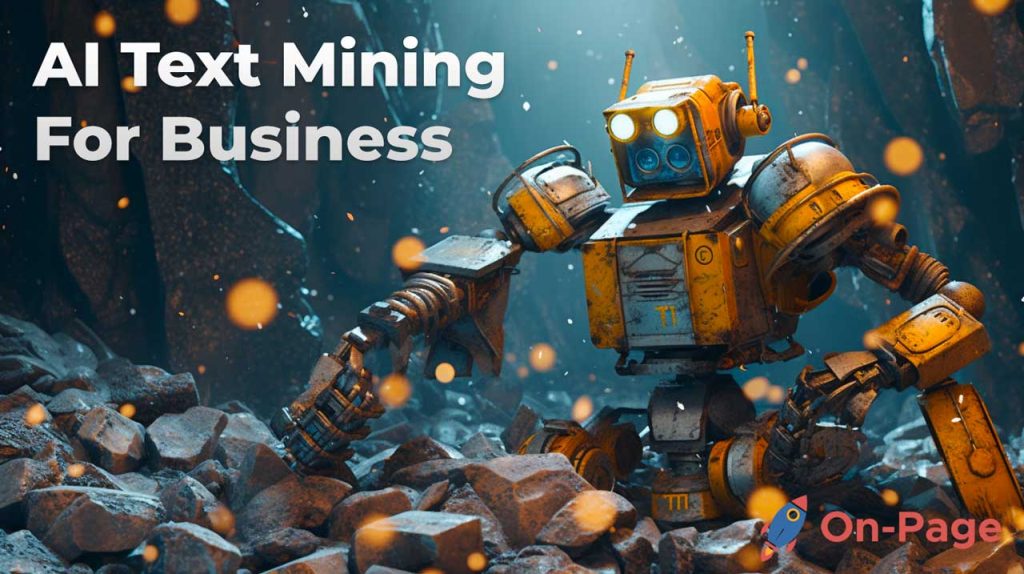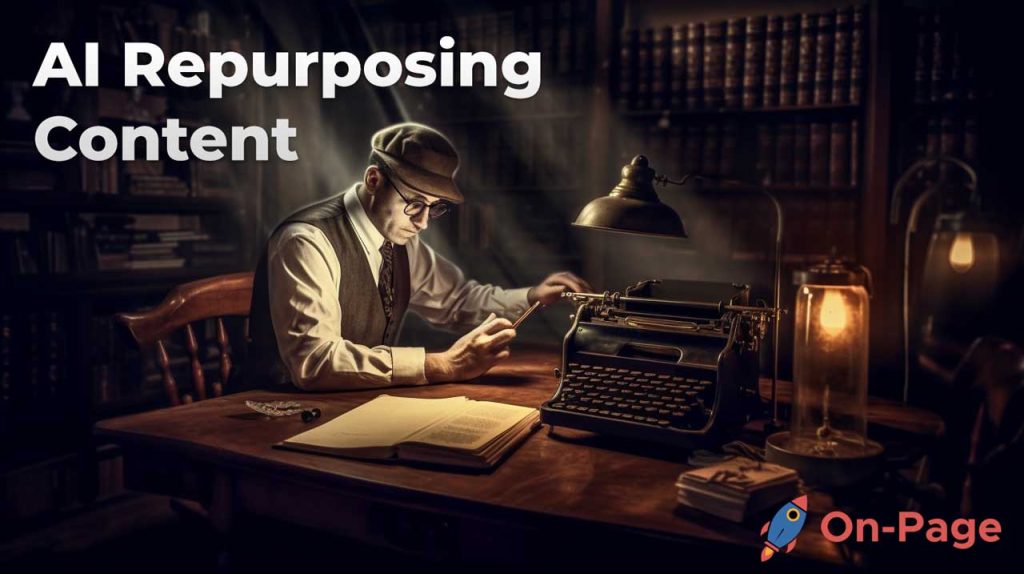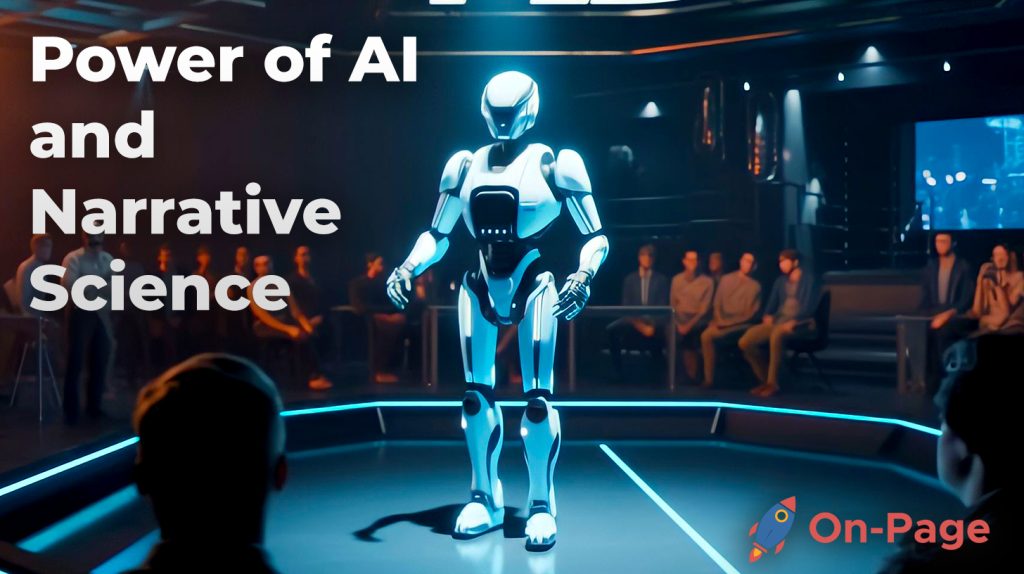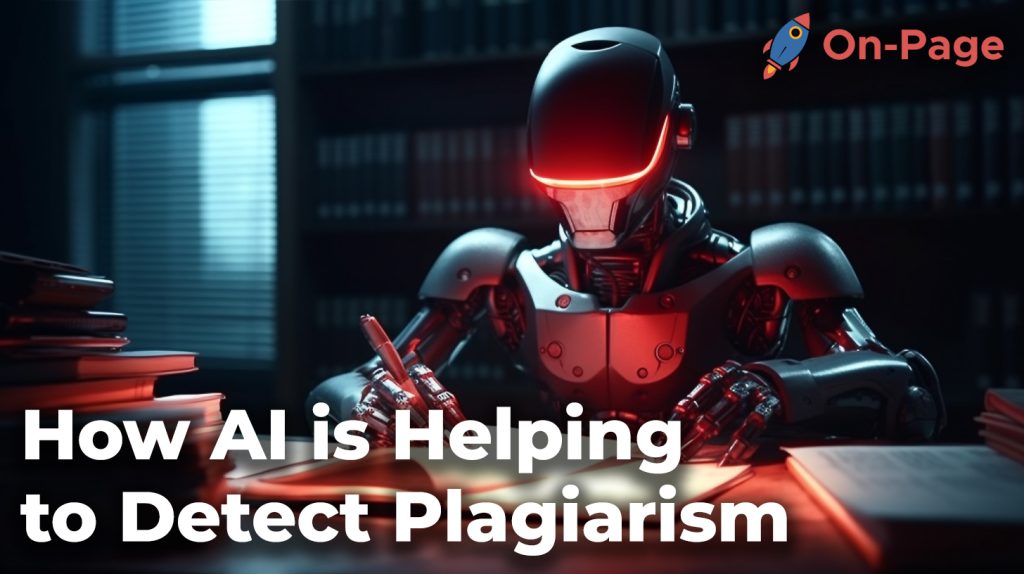
Imagine a world where your carefully crafted content is effortlessly stolen and proliferated across the web, damaging your brand reputation and all thanks to the exponential growth of AI-generated content. Frightening, isn’t it? Fear not! In this cutthroat digital era, AI-powered plagiarism detectors emerge as vigilant superheroes safeguarding your intellectual property and maintaining the integrity of your unique content. So buckle up and get ready to explore how AI is tackling the terrors of plagiarism in generated content, ensuring your hard-earned online standing remains unblemished.
Plagiarism detection software powered by artificial intelligence uses advanced algorithms to identify patterns and similarities in text. When it comes to detecting plagiarism in AI-generated content specifically, these algorithms are trained on pairs of data that include inputs from both humans and AI. This enables the software to identify instances of plagiarism wherein an AI writer has searched for existing content on the web and then used paraphrasing to generate unique content. By thoroughly analyzing both human and machine writing patterns, these tools can accurately detect instances of plagiarism in AI-generated content.
AI in Content Generation
Artificial Intelligence (AI) has revolutionized the way we create content. It is making its way into every field, from chatbots to article creation and programming, with human-like capabilities. AI-powered writing algorithms make use of advanced natural language processing to generate grammatically correct sentences, mimic human thought processes, and match the tone and style of writing. As a result, AI-generated content is quickly becoming the go-to solution for many content creators.
For instance, On-Page.ai’s Stealth Writer is an excellent AI-powered writing algorithm that can produce high-quality articles within seconds after inputting keywords for topics. The tool not only generates unique content but also ensures that it passes any plagiarism checks.
The widespread adoption of AI-generated content started long before web-based chatbots or even search engines. Some examples include weather forecasts, sports score recaps, and stock price updates, among others. All the listed types of content are usually formula-driven, but they require large numbers of people to produce and publish.
There is no doubt that AI-generated content has significantly simplified the tasks for content creators. By using algorithms that interpret users’ written request inputs and then generate output based on those requests, websites such as HuffPost have been able to create dynamic stories about sports events by merely inputting statistics and basic facts manually from what happened in various games.
In addition to that, AI writers offer some advantages that traditional writers can’t compete with when it comes to data analysis and real-time updates. They are speedy and accurate with attention to detail without being biased like humans because their approach is purely mathematical.
However, there are debates surrounding how much control humans should have over machine learning models that churn out articles automatically without any additional editing or revision. For one, this leaves plenty of room for errors since all machines depend on existing data sets to create more of their algorithms. By doing so, some argue, AI-generated content runs the risk of being formulaic.
- According to recent reports, AI-powered plagiarism checkers have achieved up to 99% accuracy when detecting plagiarized AI-generated content.
- In 2023, Copyleaks AI Content Detector claimed a 99.12% accuracy rate at distinguishing between human-written and AI-generated content.
- Winston AI can detect ChatGPT-generated content with a reported accuracy of about 99%, even reading PDF and image files for any potential plagiarism of AI-generated text.
In the next section, we’ll be looking at the types of AI writing algorithms that power these content creation tools and how they differ from one another.
Types of AI Writing Algorithms
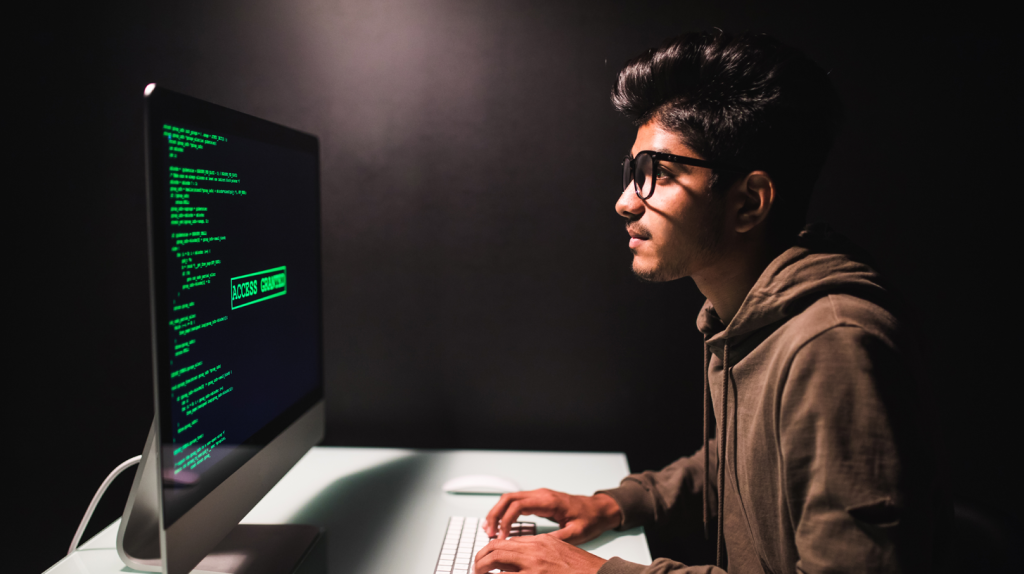
There are different types of AI writing algorithms that render distinct levels of sophistication in generating written content. Let’s take a closer look at some of them:
- Markov Chain Monte Carlo algorithm
- Recurrent Neural Networks
- Generative Adversarial Networks
- Reinforcement Learning
The Markov Chain Monte Carlo algorithm is used to predict possible words that a user may type after typing certain phrases, making it suitable for auto-suggesting responses or correcting spelling errors and grammar mistakes in real-time chat rooms.
Recurrent Neural Networks (RNNs) are best suited for creating contextual information and long-term dependencies across time-series data. They are well-suited for predictive text software that can complete typed thoughts or even predict the outcome of an ongoing conversation on social media platforms.
Generative Adversarial Network (GAN) is a popular algorithm for creating fake images and audio and also can apply to written content generating articles about topics that do not exist in reality yet sound completely realistic. GAN-based article generators can create plausible stories about everything from science fiction plotlines to historical events.
Reinforcement learning has been widely applied in fields such as robotics and gaming where no significant progress is made without repeating specific actions several times. It involves using a combination of goals and reinforcement signals to pick the best action out of other possibilities in any given scenario.
To understand the differences between these algorithms better, let’s try comparing them to cars. Markov Chain Monte Carlo Algorithms are like automatic transmission cars that allow novice drivers to switch gears easily. RNNs function like cruise control, making driving easier and more comfortable on long trips. GANs are high-performance cars. They create content at a breakneck speed that can fool even the most experienced content creators. Finally, Reinforcement Learning is like an autonomous car that needs data input and suitable goals to make decisions.
AI-Powered Plagiarism Detection
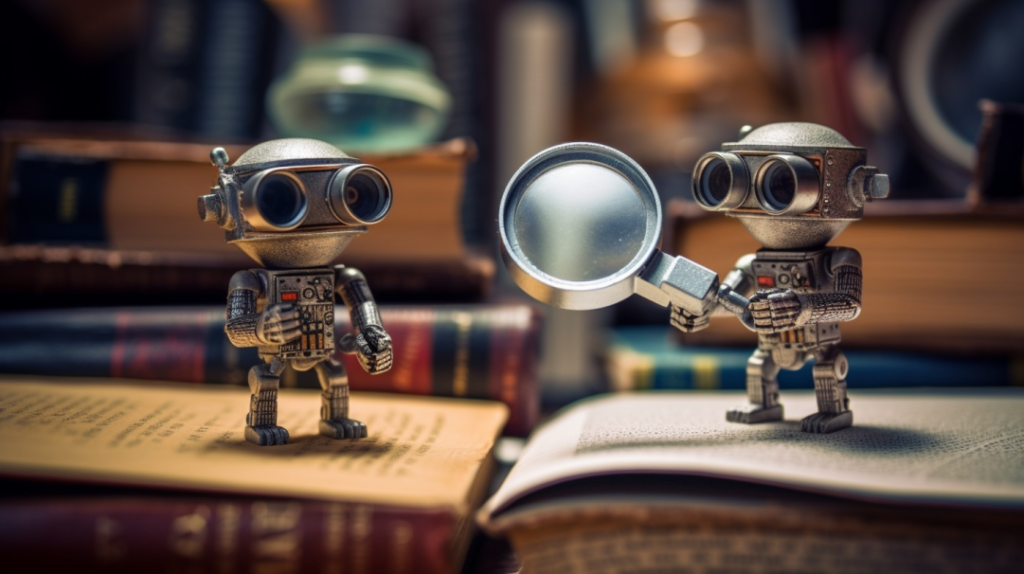
One of the biggest challenges in detecting plagiarism in generated content is the ability of AI-powered systems to identify text that has been created by machines instead of humans. However, recent advances in AI algorithms have made it possible for plagiarism detection tools to recognize patterns that are unique to machine-generated text.
For instance, when generating content, AI models often use a process called Markov chain sampling, which involves predicting the likelihood of words based on their frequency and position within a given sentence. This results in sentences that follow a predictable pattern and lack the natural variation found in human writing.
To detect such patterns, machine learning algorithms are trained on large datasets of both human-written and machine-generated text. These algorithms learn to distinguish between machine-generated text and human-written text by analyzing differences in style, grammar, and vocabulary.
The most effective AI-powered plagiarism detection tools use a combination of techniques to identify uniquely generated content, including identifying writing patterns that are indicative of artificial intelligence.
Detecting Unique Writing Patterns
One of the key ways that advanced AI-powered plagiarism detection tools are able to identify machine-generated text is by analyzing unique writing patterns that are specific to different types of AI algorithms.
For example, some AI models generate language by using an encoder-decoder architecture that converts input data into numerical representations before generating output text. Such models often produce text with specific grammatical structures and phrasing that is characteristic of this type of algorithm.
Some critics argue that this approach is flawed because machine learning systems can adapt to any given set of rules or patterns used by plagiarism detectors. However, proponents of these tools point out that it is difficult for machines to completely mimic human writing since there is always a degree of unpredictability in language use.
In many ways, detecting plagiarism in generated content is similar to identifying fake news or other forms of disinformation. Just as fact-checking algorithms use pattern recognition and natural language processing to analyze news articles and identify potential falsehoods, AI-powered plagiarism detection systems use similar techniques to determine whether a given piece of text is likely to have been generated by a machine.
By leveraging these sophisticated AI algorithms, developers are better equipped than ever before to identify instances of plagiarism in generated content and protect against academic dishonesty and intellectual property theft. However, as with any new technology, there are still many challenges to be overcome if we hope to realize the full potential of AI-powered plagiarism detection.
Identifying AI-Generated Text

AI-generated text is becoming increasingly popular and sophisticated. However, it is also posing new challenges for plagiarism detection tools. Unlike human writing, AI-generated content is created by algorithms that follow predefined patterns. Therefore, identifying such text requires detecting unique writing patterns that are specific to machine-generated content.
For instance, a common characteristic of AI-generated text is its lack of coherence and structure. While it may contain an abundance of information, it often fails to develop meaningful connections between ideas or construct logical arguments. This lack of coherence can serve as an indication that the text was not written by a human.
Another way to identify AI-generated content is by analyzing its vocabulary and syntax. AI algorithms tend to rely on templates and preset phrases without considering their context. Thus, they can produce awkward or incorrect sentence structures or use inappropriate language in certain contexts.
However, some argue that these characteristics may also exist in human writing, particularly when the author lacks proficiency in the language or has limited knowledge of the subject matter. Therefore, solely relying on these features may lead to false detections and limit the ability of plagiarism detection tools to accurately identify AI-generated content.
To better understand this concept, think of detecting AI content as solving a jigsaw puzzle. Each piece represents a unique feature of the text that contributes to its overall nature as being generated by an algorithm or written by a human. Only when all pieces fit together can you determine whether the text was produced by a machine or not.
Given the complexity surrounding identifying AI-generated text, many plagiarism detection tools have developed advanced algorithms capable of distinguishing between human writing and machine-generated content.
Popular AI Plagiarism Checkers
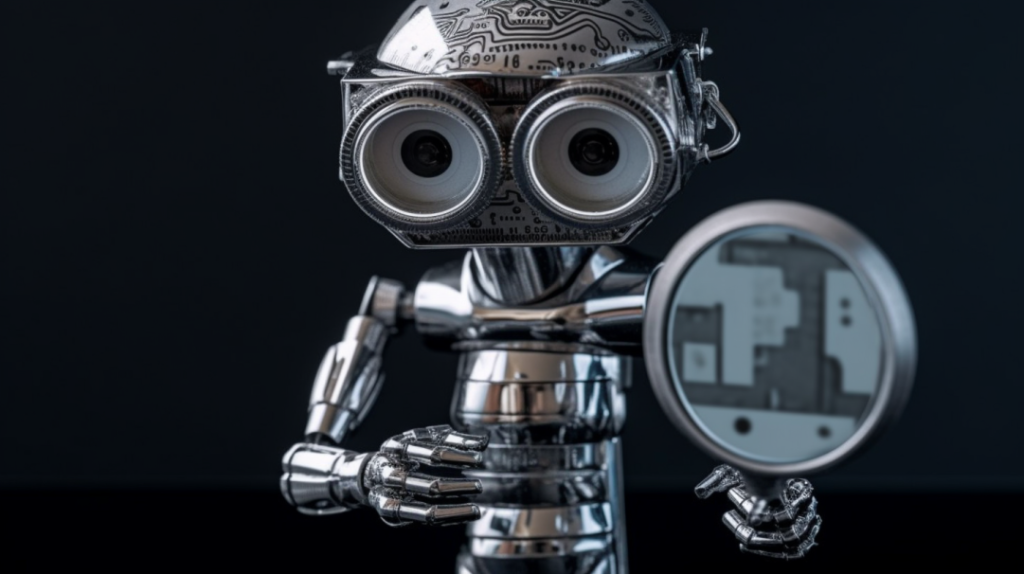
Plagiarism detection tools have become essential for educators, businesses, and content creators alike. With the surge in AI-generated content, there has been an increased need for more accurate and efficient plagiarism detection tools. Here are some of the most popular AI plagiarism checkers that can identify AI-generated text effectively:
OpenAI Text Classifier is one of the newest additions to the field of AI plagiarism detection. It has been trained on pairs of data, including inputs from both humans and AI, making it easy for the tool to detect plagiarized AI text accurately.
Copyleaks is another widely used plagiarism detection tool that promises 99.12% accuracy at finding out which content has been created by AI and humans. It uses AI to detect AI-generated text and provides various pricing plans depending on the volume of usage.
GPTRadar, based on GPT-3, is an AI-supported plagiarism checker that detects all kinds of text online and classifies them as human or AI. It works on a token basis and gives free users 2,000 tokens for use. While its accuracy is not as high as some other tools, it’s a great option for those just starting with plagiarism detection.
These tools use various techniques such as natural language processing (NLP) algorithms, machine learning models, pattern analysis, and character data comparison to differentiate between human-written text and content generated by algorithms. Their success lies in their ability to analyze various characteristics simultaneously, such as writing style, syntax, grammar, tone, and vocabulary usage, among others.
While these tools have proven highly effective in detecting most instances of plagiarism accurately, they may still fail to recognize some sophisticated forms of fraud. For instance, some creative students might ‘correct’ poor-quality text generated by algorithms or paraphrase existing sentences manually after generating the majority of the content through machines.
OpenAI Text Classifier, Copyleaks, and GPTRadar
As mentioned earlier, several AI-powered plagiarism checkers have been developed to detect instances of plagiarism in generated content – be it human or AI-created. Of these, OpenAI Text Classifier, Copyleaks, and GPTRadar are some popular tools being used by researchers and educational institutions.
OpenAI Text Classifier is one such tool that detects AI-written content. It can identify plagiarized text by analyzing the patterns of inputs from both humans and machines. OpenAI claims its tool has an accuracy rate of 99.3%, making it effective to prevent AI-generated plagiarism.
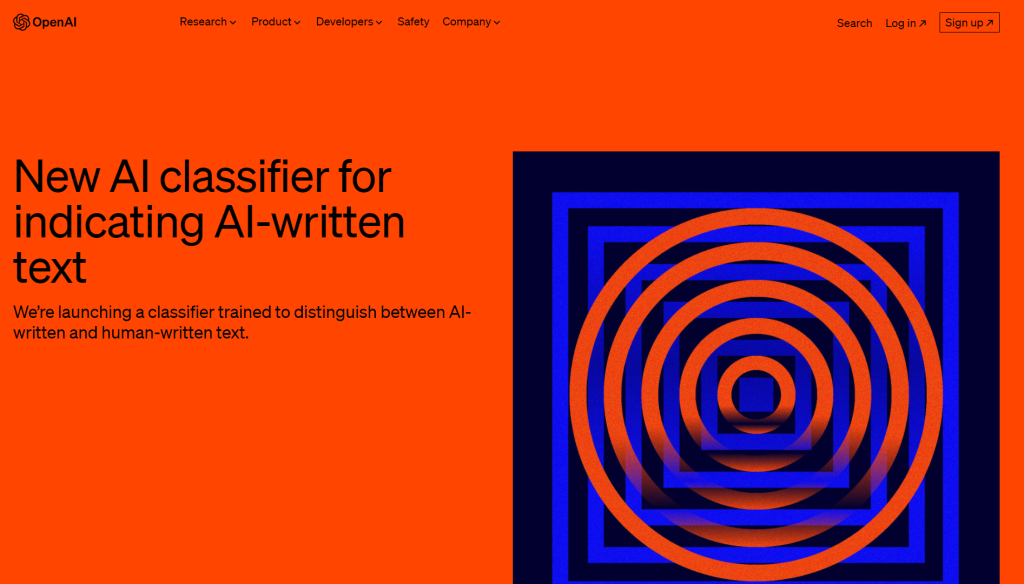
Copyleaks AI Content Detector is another popular tool for AI plagiarism detection. The software promises an accuracy rate of 99.12% percent at finding which content has been created by humans and which text has been generated using machine-learning models. Copyleaks uses various methods like semantic analysis, NLP, and deep learning algorithms to identify potential plagiarism.
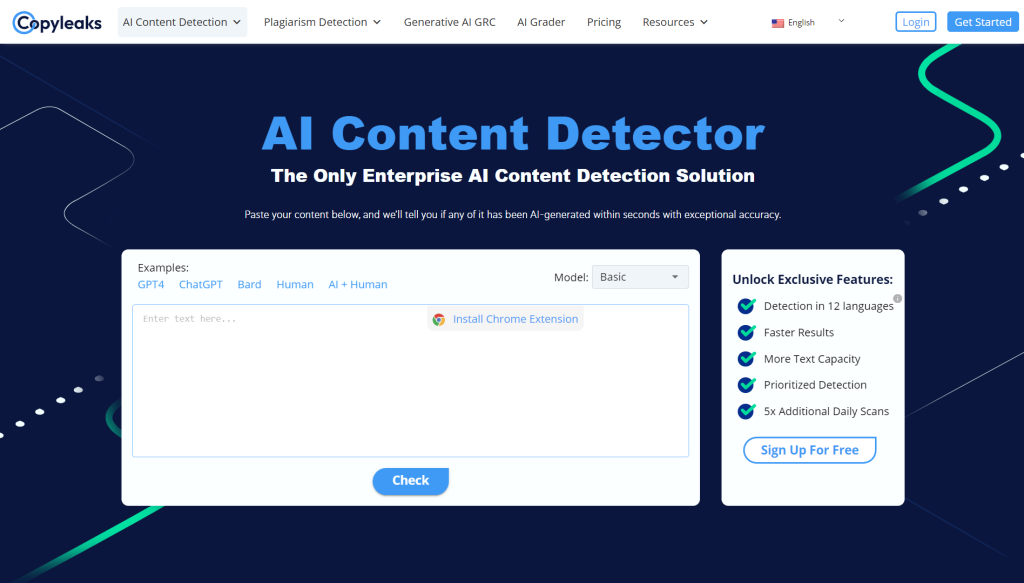
GPTRadar is based on GPT-3 technology and classifies text as either human or machine-generated. The tool works on a token basis where free users get access to 2,000 tokens per month while premium members receive unlimited tokens to use per month. GPTRader helps users identify ChatGPT content as well.
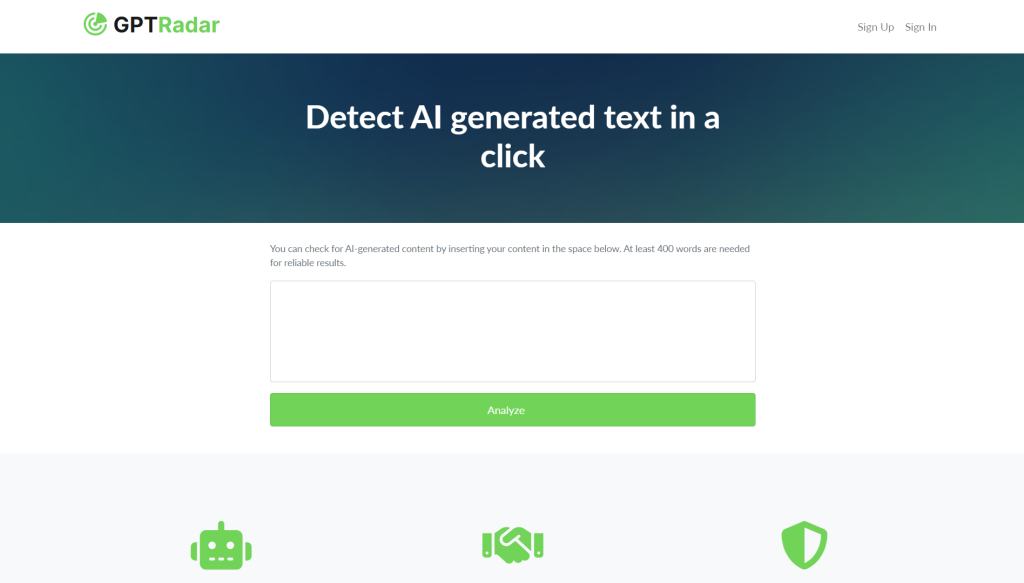
Let us consider a scenario where you are a student trying to submit an assignment that requires unique and original content creation. As per the class guidelines, all submitted work must pass through their anti-plagiarism software to assure academic integrity in submission. Since the assignment deadline is near and you cannot afford to spend hours on research or writing, you decide to use an AI writer to generate your essay within minutes rather than writing it manually.
Later upon submission of your work, your instructor runs the document through their institution’s plagiarism-checking software and detects high similarity to content from previously published papers. The software flags the document as potentially plagiarized, resulting in your academic work being penalized for violating guidelines.
While AI-generated content can be unique, there is still a possibility that the material generated would infringe on copyright issues or violate ethical guidelines. Therefore, the detection of AI-generated content through plagiarism checkers becomes an essential step to ensure academic integrity.
It can be argued that such tools create fear and chaos among AI-powered writers where they feel their creativity is questioned when artificial intelligence still has its limits when generating original content if trained without human intervention. In some cases, software such as Copyleaks may detect false positives when similar language patterns exist in various works.
Despite the debates around AI-generated plagiarism checks, the truth remains that tools like OpenAI Text Classifier, Copyleaks, and GPTRadar are crucial for maintaining educational and professional integrity while using machine-generated content.
Challenges and Future Developments in AI Plagiarism Detection

One major challenge with AI plagiarism checkers is detecting non-text academic dishonesty. Although these tools are effective at identifying copied text elements, some students fool anti-plagiarism systems by including screenshots of existing material or copying diagrams that do not show up in text-based plagiarism detection algorithms.
Another challenge with built-in AI algorithms checking plagiarism is their potential bias which poses various questions regarding fairness to diverse students who face issues of language barriers or learning disabilities. This significant drawback could lead to the rejection of well-written but non-standardized papers while favoring those written to conform to generics.
Continued development of machine learning models and natural language processing techniques will improve AI-powered plagiarism detection even further. The introduction of multi-modal AI systems could help overcome loopholes that appeared during sample collection or analysis identifying authentic datasets from fraudulent ones involving more than board textual manipulation.
AI-powered plagiarism detection technology reminds us of a metal detector used to identify metals buried deep in the earth. While it might not necessarily detect every minor piece of jewelry that lies on the surface, it is still effective at detecting large consequential clues that lie underneath.
As machine-generated content continues to gain traction, AI plagiarism detection tools such as OpenAI Text Classifier, Copyleaks, and GPTRadar will play a crucial role in ensuring academic integrity and preventing plagiarism using emerging artificial intelligence systems.
From improved machine learning models to the inclusion of multi-modal analyses, the future of AI plagiarism detection seems promising. However, as the use of AI technology like On-Page.ai and its Stealth Writer tool increases, researchers must ensure proper ethical guidelines are preserved concerning AI usage for educational purposes.
Frequently Asked Questions
What are the common methods used to detect plagiarism in AI-generated content?
One of the common methods used to detect plagiarism in AI-generated content is through text-matching algorithms. These algorithms compare the text to a database of previously published works and identify any similarities or matches. Another method is machine learning, which trains models to recognize patterns in writing styles and can flag suspicious content.
According to a report by Turnitin, a leading plagiarism detection software company, artificial intelligence and machine learning have greatly improved plagiarism detection accuracy and efficiency. In fact, their AI-powered system has demonstrated a 90% accuracy rate in detecting plagiarism in student writing.
Furthermore, advanced technologies such as neural networks have proven highly effective at detecting subtle forms of plagiarism that traditional methods might miss. As AI continues to evolve, so too will its ability to identify instances of plagiarized content with ever-increasing precision.
Overall, while AI-generated content may pose unique challenges for plagiarism detection, there are numerous effective techniques available to tackle this growing issue head-on.
Can AI itself be used to detect plagiarism in its own generated content?
Yes, AI can be used to detect plagiarism in its own generated content. In fact, AI-powered plagiarism detection software has already been developed and has shown promising results.
One such example is the plagiarism detector developed by Turnitin, a leading educational tech company. Their software uses natural language processing algorithms and machine learning techniques to analyze text and identify similarities between documents. According to their website, their software has flagged over 1 billion instances of potential plagiarism so far.
Moreover, studies have shown that using AI-powered plagiarism detection software can significantly improve the accuracy of detecting plagiarism compared to manual methods. A study published in the Journal of Academic Ethics found that Turnitin’s plagiarism detection system detected 97% of cases of plagiarism, while humans only detected 38%.
However, it is important to note that AI-powered plagiarism detection software is not infallible. It still requires input from human experts to validate its findings, as well as continuous improvement and updates to keep up with evolving methods of cheating.
Overall, while AI may have generated the content being checked for plagiarism, it can also be utilized as a powerful tool for detecting and preventing instances of academic dishonesty.
Is there any significant difference in detecting plagiarism in human-written content versus AI-generated content?
Yes, there is a significant difference in detecting plagiarism in human-written content versus AI-generated content. While traditional plagiarism detection tools are effective at identifying similarities between human-written content, they have limited ability to detect plagiarism in AI-generated content.
One reason for this is that AI-generated content is often created by combining and rearranging existing text, making it more difficult to identify matches with original sources. Additionally, some advanced AI models can generate completely original content that does not exist anywhere else on the internet, further complicating the task of detecting plagiarism.
A study conducted by Turnitin found that their traditional plagiarism detection tool was only 75% effective at detecting similarities in AI-generated content, compared to 91% effectiveness in human-written content. This highlights the need for specialized tools that can specifically detect plagiarism in AI-generated content.
Fortunately, advancements in NLP technology have led to the development of new AI-driven plagiarism detection tools that are better equipped to handle challenges unique to AI-generated content. These tools use advanced algorithms to analyze the structure and syntax of generated text, allowing them to more accurately detect instances of plagiarism.
In conclusion, while traditional plagiarism detection tools may struggle with identifying instances of similarity within AI-generated content, specialized NLP-powered tools are emerging as effective solutions for detecting plagiarism in this new era of generated content.
Are there any ethical concerns related to using AI for detecting plagiarism?
Yes, using AI for detecting plagiarism does raise some ethical concerns. While it is important to ensure academic integrity and prevent plagiarism, relying solely on AI raises questions about privacy, bias, and accuracy.
Firstly, the use of AI for detecting plagiarism may involve collecting information from student work, which can raise privacy concerns. While this data is necessary to train the AI algorithm and improve accuracy, there must be transparency and clear communication with students about how their information will be used.
Secondly, because AI relies on machine learning algorithms, there is the potential for bias in its decision-making process. A study by researchers at Stanford University found that commercially available AI systems used for predictive policing exhibited bias against minority communities. It is crucial to ensure that AI algorithms used for detecting plagiarism are designed with fairness and impartiality in mind.
Lastly, while it is widely believed that AI improves accuracy in detecting plagiarism, there may still be instances where it fails to detect subtle forms of plagiarism.
In conclusion, while AI can be a valuable tool for detecting plagiarism, it must be implemented thoughtfully to address these ethical concerns. There needs to be a balance between ensuring academic integrity and protecting individual rights and privacy.
What measures can be taken by content creators to ensure their AI-generated content is original and not plagiarized?
To ensure AI-generated content is original and not plagiarized, content creators can take several measures. One of the most effective ways is to use plagiarism detection tools that are specifically designed for AI-generated content. These tools use advanced algorithms to compare the text against a vast repository of sources to identify any similarities. As per a report by Turnitin, a leading plagiarism detection tool provider, educational institutions saw a 10-20% increase in unoriginal submissions following the rise of machine learning. This clearly indicates the need for specific tools designed for generated content.
Additionally, content creators can also use techniques like rephrasing, paraphrasing, and summarizing to create unique content. Content writers can use synonyms as well to make sure that their writing is unique while using AI-generated content.
Moreover, it is also essential for creators to provide proper attribution when using external sources within their AI-generated content. This means giving credit where it’s due can help avoid accusations of plagiarism. Plagiarism Today reports that plagiarism lawsuits have gone up by more than 500% over the past decade, indicating an urgent need for originality in all written work.
Overall, implementing these measures will help prevent plagiarism and protect the originality of AI-generated content from innovative tools like On-Page.ai.

